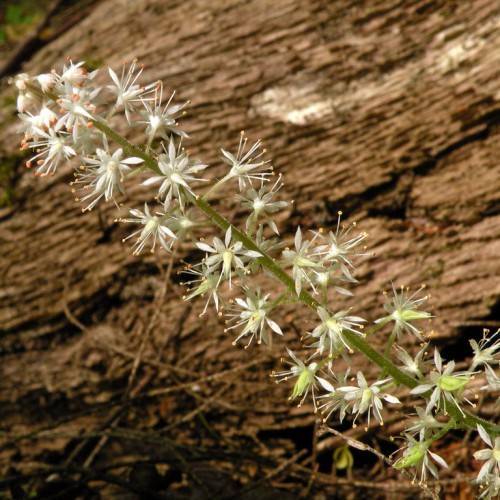
foam flower
Tiarella cordifolia
Cycle:
Herbaceous Perennial
Watering:
Average
Hardiness Zone:
4 - 9
Flowers:
Flowers In Spring
Sun:
Part shade,full shade
Soil:
Sandy Loamy
Leaf:
Yes
Growth Rate:
Low
Maintenance:
Low
Drought Tolerant:
Yes
Care Level:
Medium
watering
Foam flowers should be watered when the soil feels dry to the touch. Depending on the environment, this can range from 1-2 times a week to every other day. Make sure not to overwater, as this may cause root rot and other issues. Always check the soil before watering, as too much water can cause the plant to drown. The amount of water to apply should also be adjusted for the climate and season. During the warmer months, provide more water, but in the cooler months give slightly less.
sunlight
Foam flower prefers part shade to full sun. It should receive 4 to 6 hours of dappled or filtered sunlight each day. This could include a swath of sunlight through trees, filtered sun that is not direct, or light that is diffused through shrubs or other trees that provide ample shade. Foam flower benefits from morning light to encourage optimal growth. Generally, this species of plant should experience more shade than sun and will thrive in these conditions.
pruning
Foam flower is generally easy to maintain and requires minimal pruning. Pruning should be done in late winter or early spring, once the early growth has emerged. It is best to simply trim off any damaged or dead stems as they appear, in order to keep the plant looking healthy and attractive. If more drastic pruning is required, such as for rejuvenation, then the stems can be cut back to within a couple inches of the ground. This will result in vigorous new growth and a more abundant display of flowers. The pruned stems should then be removed to the compost pile.
